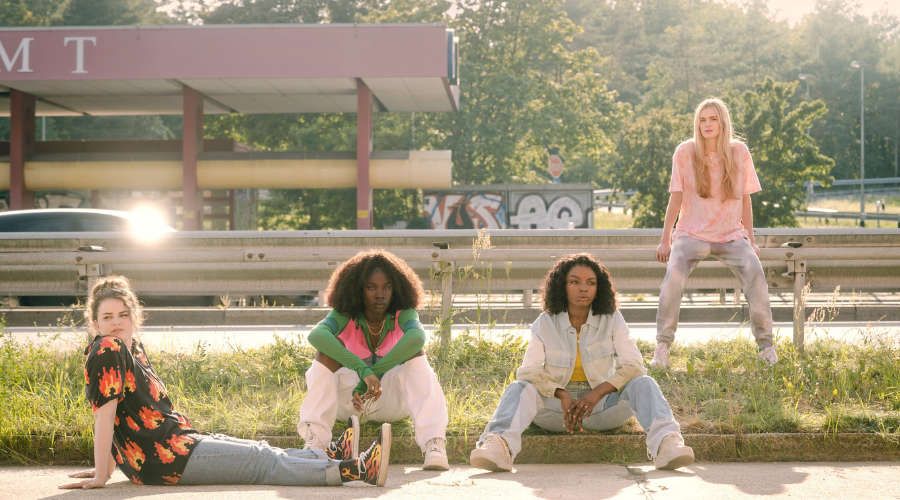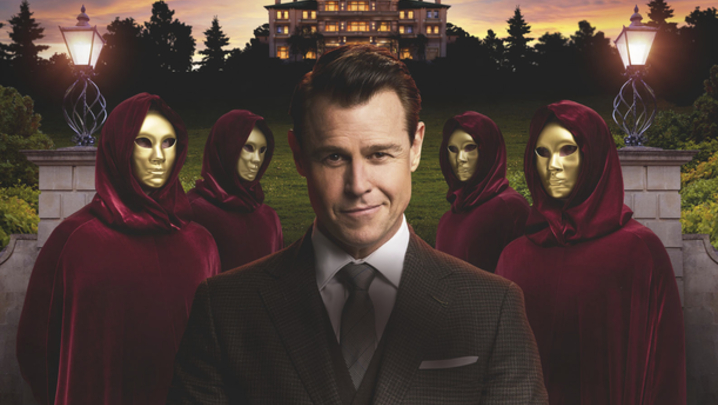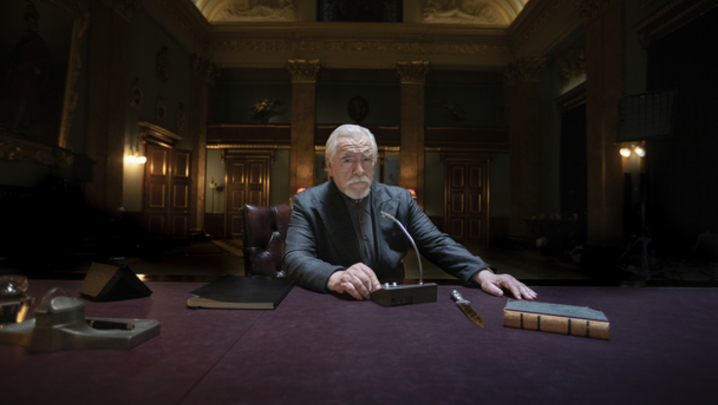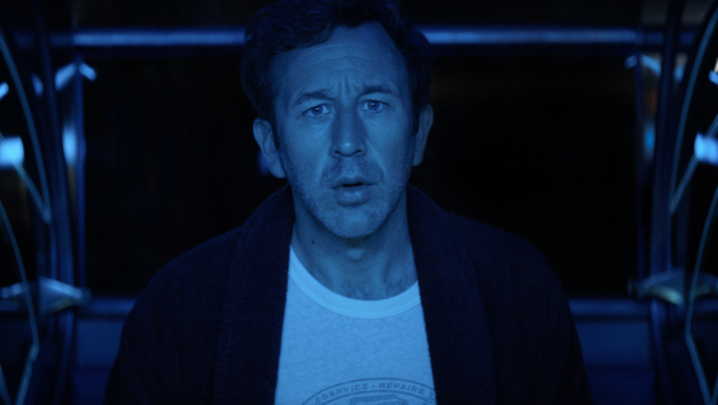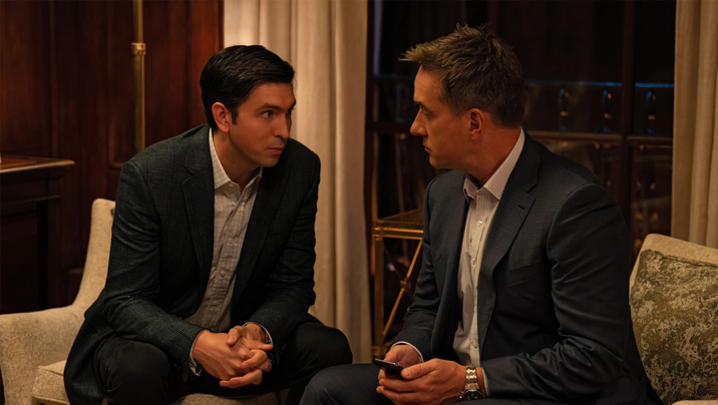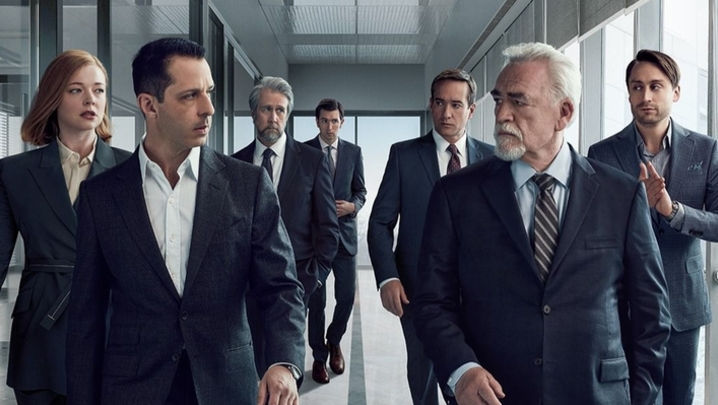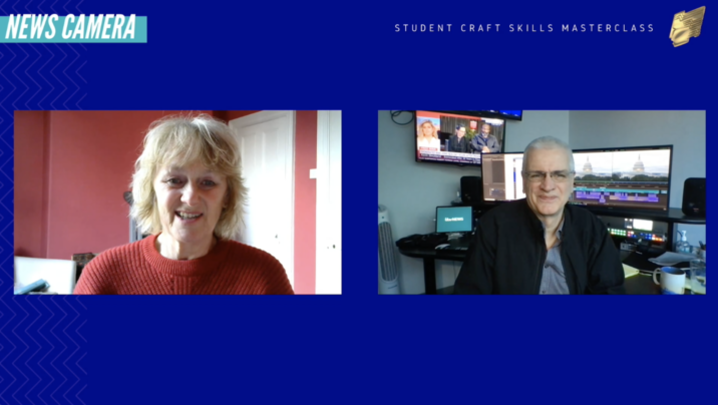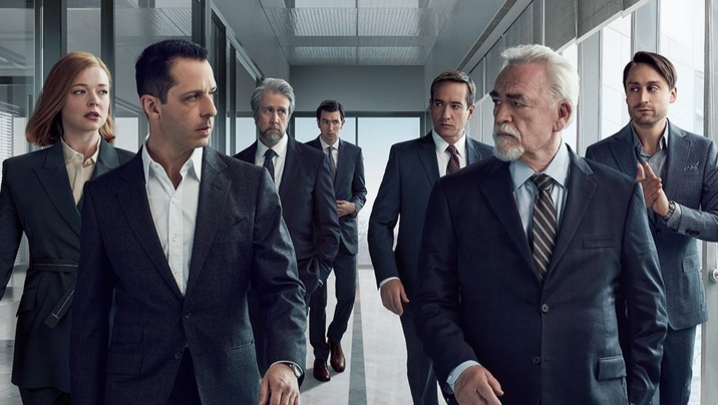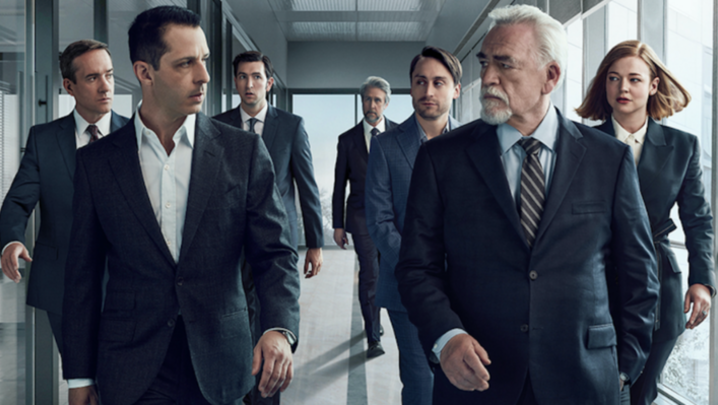Then You Run is rarely content to stay still.
The bombastic take on a road-trip-gone-wrong zips between comedy, thriller and gangster flick with frenetic impatience. Combining the hallmarks of each genre without things getting busy is no mean feat, but the eight-part adaption of Zoran Drvenkar’s novel You makes it look easy.
No small part of the reason why is its cinematography. Whether it’s a car exploding or teenagers bickering, the camera observes everything with a cool eye and steady hand. Given everything it needs to keep track of, it’s remarkably assured. One of the people we have to thank is Annika Summerson, who worked on three episodes.
Looking at her career so far, it would seem Summerson is almost as restless as the show. Having left her native Sweden after school, the cinematographer has lived and worked across the world. After studying film and video production in Australia and London – where she now lives – recent work for Then You Run took her to Berlin. She calls me from the Welsh countryside, where she is currently on a job.
The variety of locations is matched only by the variety of the work itself: her CV boasts filming both with 360-degree cameras and underwater. Through it all, her process remains relatively unchanged.
“It’s all about storytelling,” she tells me, “so in that sense, [my approach] is just dictated by how I feel when I read a script.”
“I’m trying to get to the bottom of what kind of story it is, whose story it is, what the story we want to tell is.”
For Then You Run, she was telling the story of four teenage girls on a dream holiday gone wrong. What starts out as a trip to Rotterdam is quickly derailed by gangsters. Making matters worse is a serial killer known only as the Traveller, lurking about with a bloodlust not far off from a Cormac McCarthy novel.
Despite this, the show borrows from comedy as well as thrillers. Was this blend tricky to portray visually?
“I don’t think that’s difficult actually,” Summerson says. “Once a project starts forming itself into something, […] it all merges together and creates a new thing. You can shoot comedy in a thriller detective style if you want: it’s up to you how you interpret it.”
Certainly, comedy and drama can mingle visually, as well as in the writing. The drained whites and greys that took up considerable space on Succession’s colour palette demanded to be taken seriously. The lighter moments of The Bear sit alongside hernia-inducing long takes.
This type of genre cross-breeding has been gestating for some time in television. For all its thriller elements, cult favourite Mr. Robot never shied away from quieter moments, and relied on its camera work to sell them. Characters were often framed with plenty of empty space, reinforcing the loneliness that clung to them all like fog.
Far from being dismissed as avant-garde, Summerson spies broad appeal for this sort of experimentation.
“Audiences are more perceptive to it now,” she continues. “They want something that is a little bit more sophisticated, that is a little bit more cinematic, and that has a bit of an edge to it. People are becoming really visually savvy and want to be challenged.”
To her point, Summerson’s work on Then You Run recently won the Photography award in the Scripted category at the RTS Craft & Design Awards.
The prowess of the show’s cinematography is obvious. Though it guides the viewer through fast-paced action and faster dialogue, it proves equally at home with the Traveller’s torturously slow killing sprees.
That’s not to say it takes itself too seriously. Summerson opted to keep the lighting colourful and the compositions fun, she says. Having a main cast of four led her to take inspiration from shots in 90s comedies with more than one character on camera.
“This group of women are on this amazing road trip – it’s terrifying but amazing,” she says. “We were looking at how to get our four leads in the scenes together.”
Summerson was joined on the three episodes by director Robbie McKillop, who is also a dab hand at alchemy.
“What Robbie does well as a director is the tonal mixing,” Summerson says. “He mixes comedy with thriller with psychological drama, and then he makes it work in one series.”
Their next collaboration after Then You Run combined comedy, action, thriller and romance at lightning-fast pace, in four episodes of Wedding Season. A few years prior, Summerson and McKillop had teamed up on the second series of stylish BBC Three thriller Clique, which follows university students down a hedonistic rabbit hole.
Each project requires a slightly different strategy, she explains. The two felt that Then You Run should feel more controlled than Clique’s handheld, young adult approach, leading to more of a focus on cranes, dollies and steadycams.
Just as important as finding people you can collaborate with is weeding out those you can’t.
Summerson likens the breakneck interview process with a director to speed dating. Even though the director is the one asking the questions, the cinematographer also needs to get in a few key queries to see if they’ll make a suitable double act. Amongst these is getting to know how the director likes to work, she explains, and the extent to which they value prep time.
She also makes sure to ask who both the production and costume designers are. The best cinematography in the world won’t save a show with subpar art direction, she notes.
“If the little touches are not right,” she says, “it doesn’t matter what I do. It will look cheap, or wrong.”
To her mind, everyone down to the carpenters can impact the final product, for better or worse, meaning everyone on-set counts.
“The thing with TV at the moment is that you have very little prep,” she says. “If I could change the industry, I would have more prep together with the other departments. It’s almost like we’re expected to turn up and then just perform on the day at a very fast pace, on the spot.”
Despite having been across the globe, the industries in the countries Summerson has worked are broadly similar, she says, which makes the people all the more crucial. Have her many travels affected her as a cinematographer?
“I hope so, yeah,” she says. “I think so. Everything you experience feeds back into your work in one way or another, even if it’s not direct and you can’t put your finger on it. Subconsciously, it informs who we are.”

